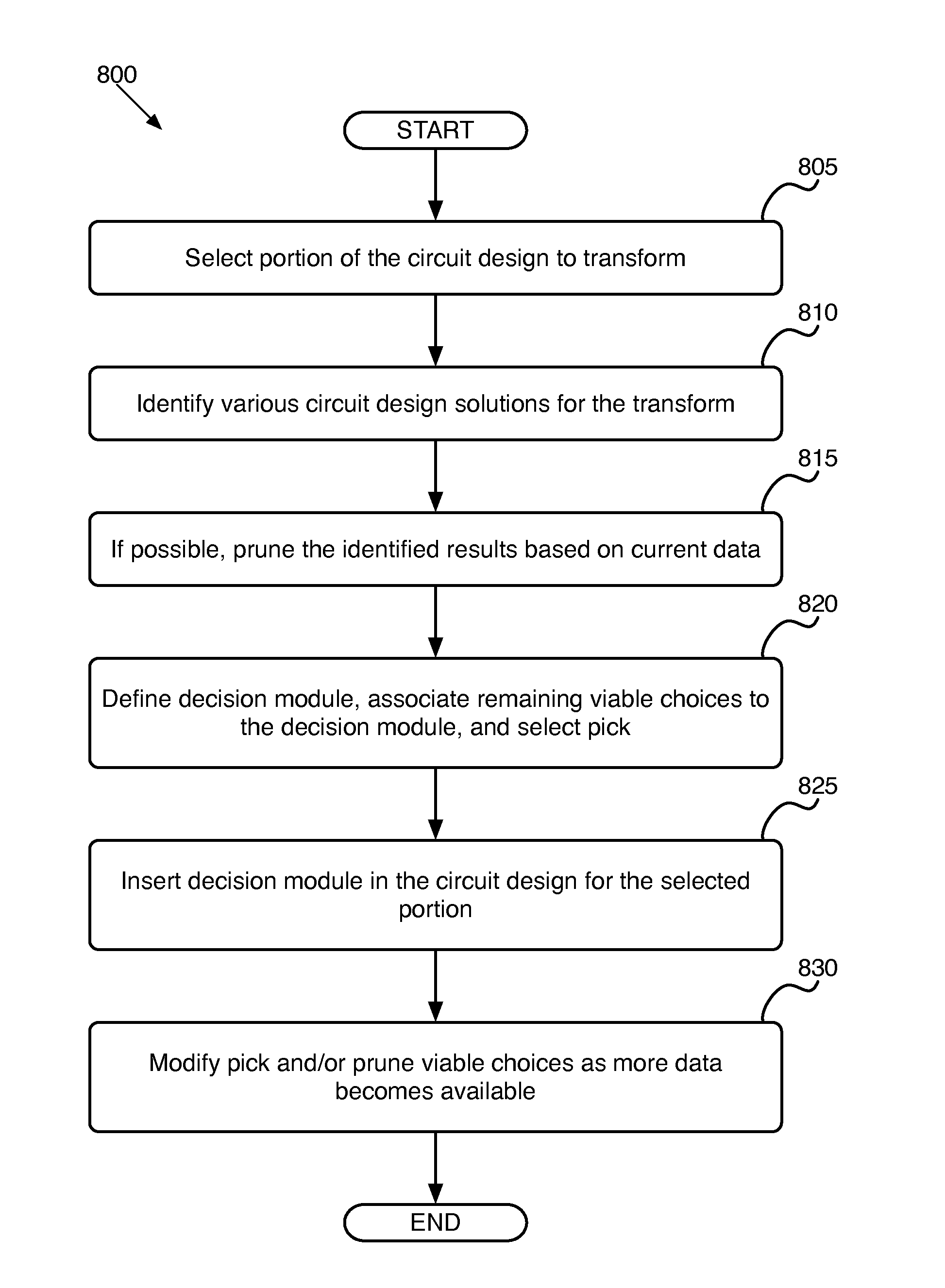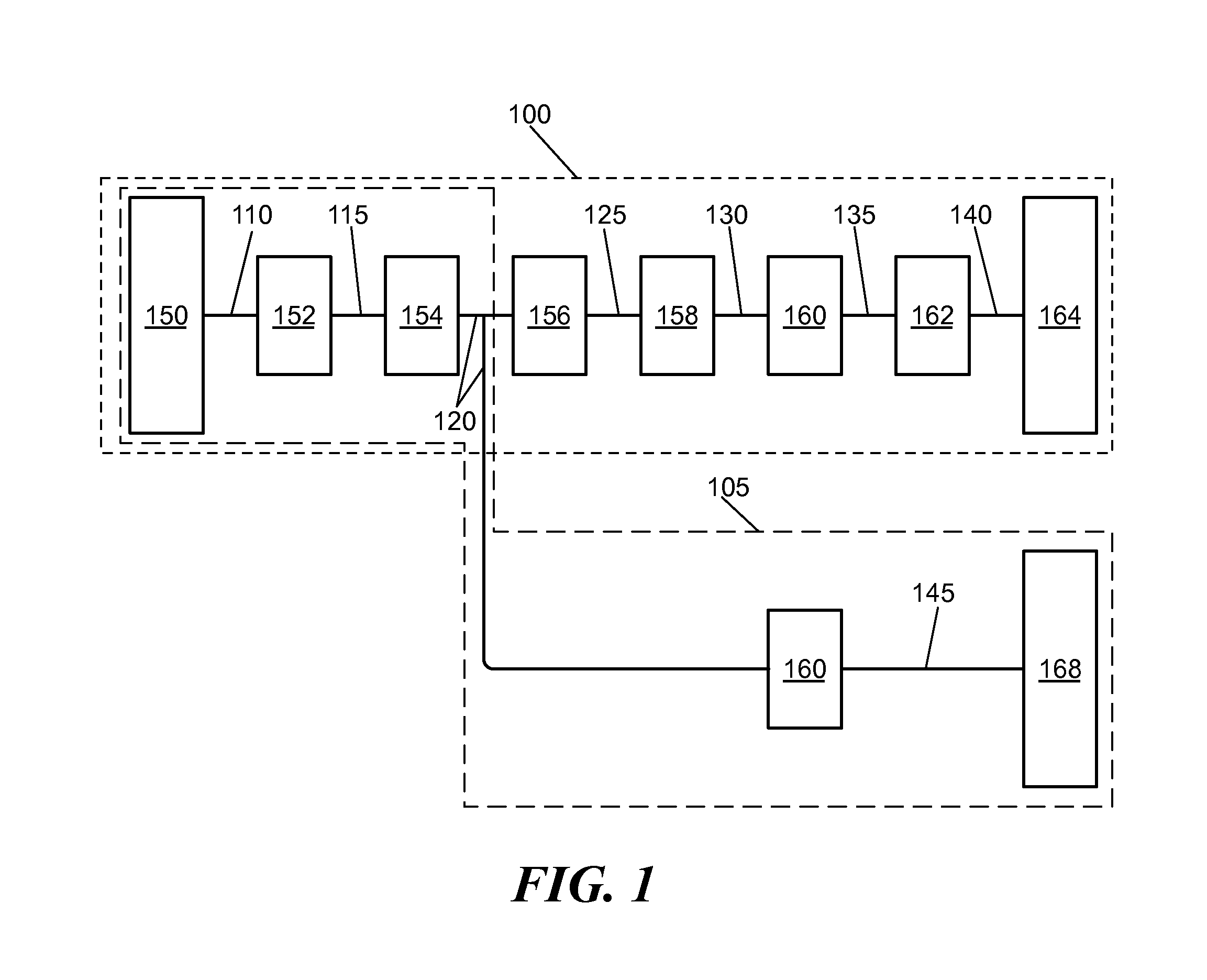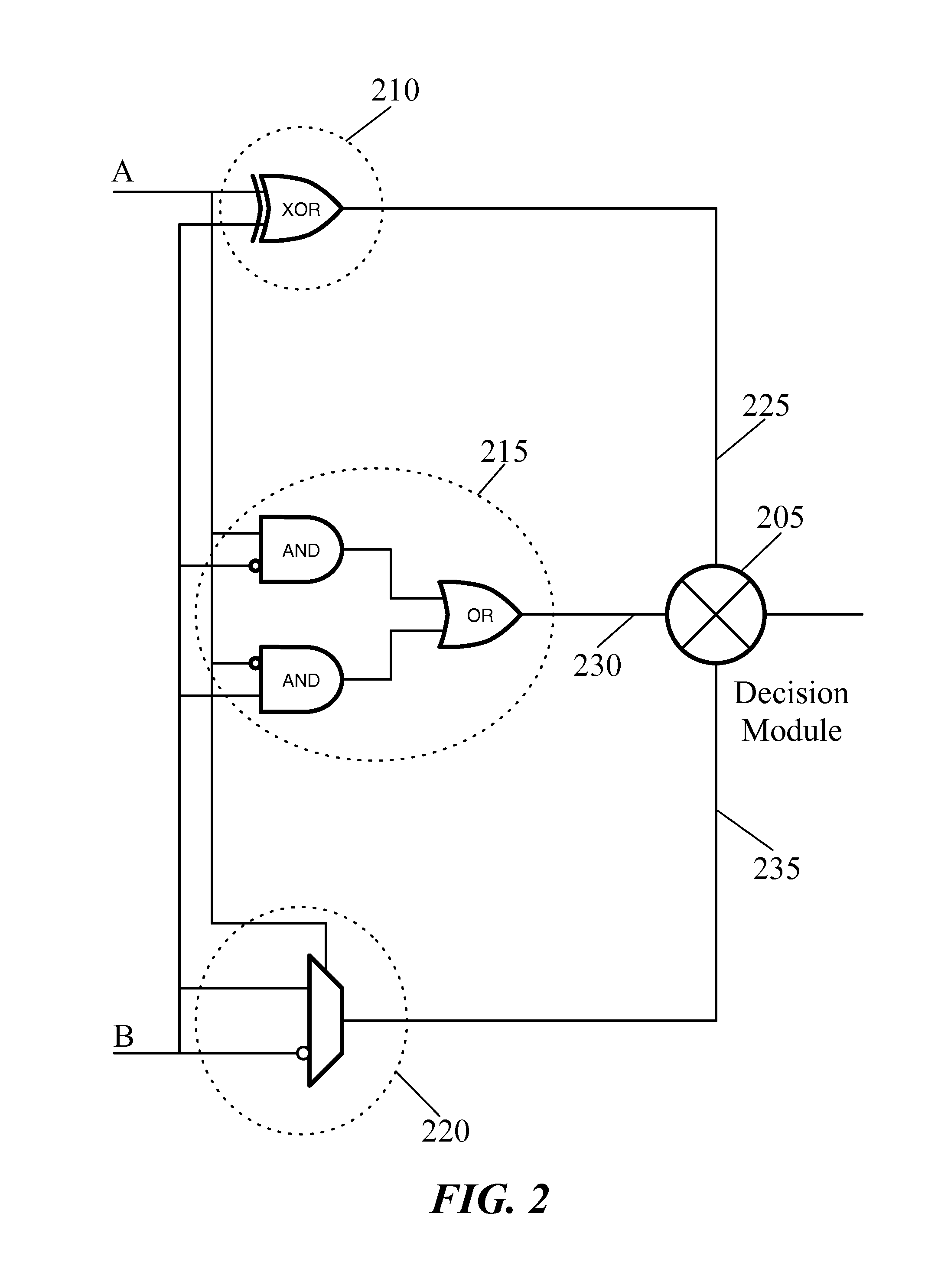Decision modules in integrated circuit design
a technology of decision modules and integrated circuits, applied in the direction of cad circuit design, program control, instruments, etc., can solve the problems of insufficient constraint information of synthesizers, greedy decisions of synthesizers based on unrealistic data, and insufficient structural equivalents of adders, etc., to facilitate post-synthesis operations, facilitate placement of physical designs, facilitate routing of physical designs
- Summary
- Abstract
- Description
- Claims
- Application Information
AI Technical Summary
Benefits of technology
Problems solved by technology
Method used
Image
Examples
Embodiment Construction
[0040]In the following description, numerous details are set forth for purpose of explanation. However, one of ordinary skill in the art will realize that the invention may be practiced without the use of these specific details. In other instances, well-known structures and devices are shown in block diagram form in order not to obscure the description of the invention with unnecessary detail.
[0041]Some embodiments of the invention provide an abstract primitive decision module for insertion within a logical representation (i.e., a netlist) of a user circuit design. In some embodiments, the decision module receives as inputs alternative solutions for a given function or segment of a netlist. In some such embodiments, the alternative solutions include functionally equivalent, but structurally different implementations of the given function or segment of the netlist. The decision module selects one of the inputs to be connected to the remainder of the netlist to provide a complete func...
PUM
 Login to View More
Login to View More Abstract
Description
Claims
Application Information
 Login to View More
Login to View More - R&D
- Intellectual Property
- Life Sciences
- Materials
- Tech Scout
- Unparalleled Data Quality
- Higher Quality Content
- 60% Fewer Hallucinations
Browse by: Latest US Patents, China's latest patents, Technical Efficacy Thesaurus, Application Domain, Technology Topic, Popular Technical Reports.
© 2025 PatSnap. All rights reserved.Legal|Privacy policy|Modern Slavery Act Transparency Statement|Sitemap|About US| Contact US: help@patsnap.com



